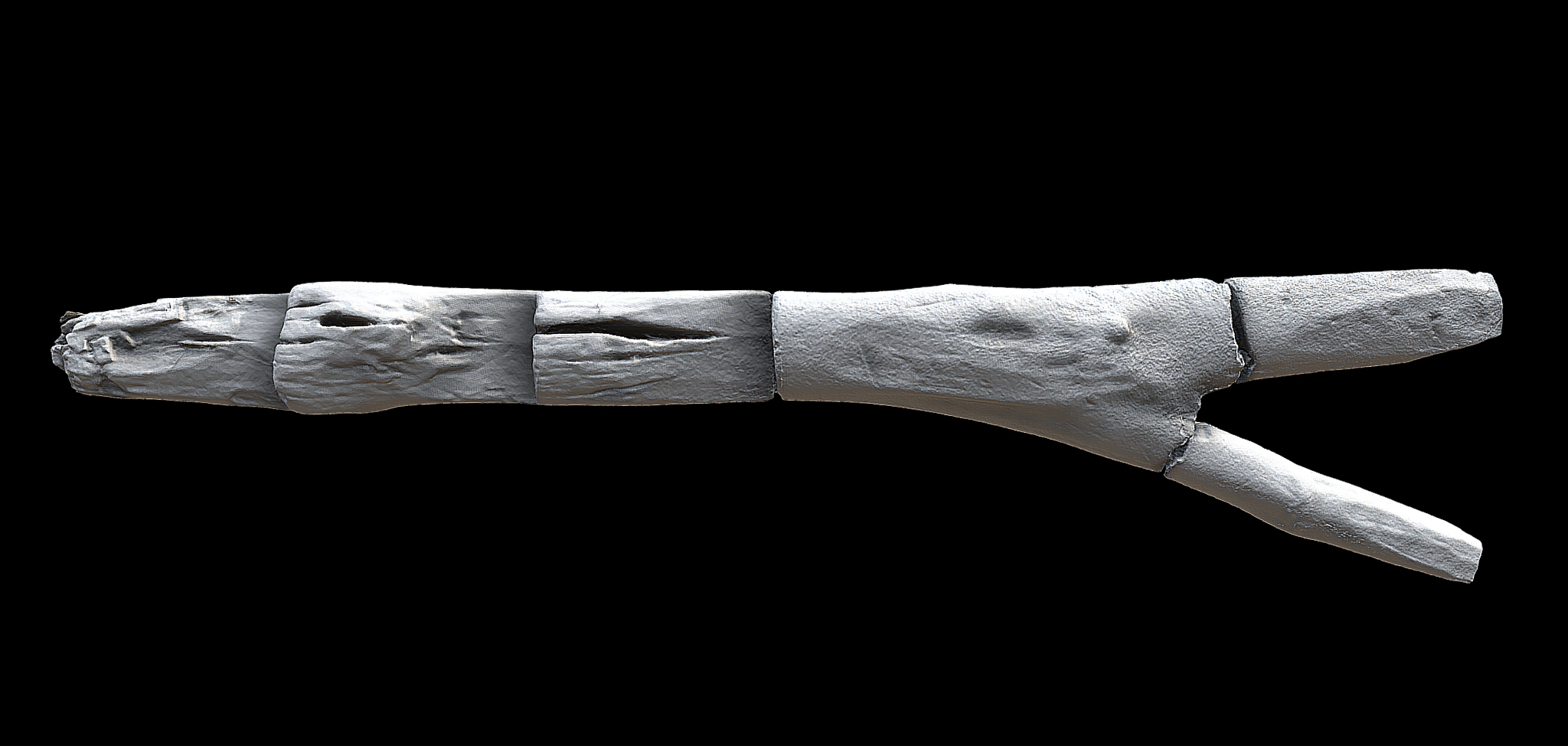Ladders such as these, with notched steps down one face, are the most commonly known type of ladder used to access later prehistoric field wells and waterholes in England.
Archaeological investigations at Bucklers Park in Crowthorne, Berkshire, have revealed a window onto a significant later prehistoric place, which was used and revisited over 1700 years between the Early Bronze Age and later Iron Age. A series of wells, burnt mounds and troughs indicate that activity at the site was focussed around the heating of water using hot stone technology.
The ladder was found in a well, one of a series that were dug from the early Middle Bronze Age onwards. These wells are associated with a series of burnt mounds, a puzzling site type the remains poorly understood.
Burnt mounds are mounds of fire-cracked stone, often associated with the heating of water using hot stones. Stones are heated in a fire and then placed into troughs filled with water. The rapid change in temperature causes the stones to break into pieces which are scooped out and set aside, eventually forming a mound.
These troughs might be filled with water from a nearby stream, or from water drawn from under the ground via a well.
The function of burnt mounds remains uncertain. Existing interpretations include food processing or cooking, brewing, bathing, the creation of steam for sweat lodges or saunas, textile production, the working of wood and leather, and even copper production. It’s also entirely possible that not all burnt mounds served the same purpose.
At Bucklers Park, the bathing hypothesis is one possible interpretation, supported by the presence of a human flea, which we might expect to find in areas associated with washing or grooming. However, the flea was associated with domestic waste that had been dumped into the well, so it may have entered the well this way rather than during bathing activities.
Work at Buckers Park was undertaken by AOC Archaeology Group, who were commissioned by RPS on behalf of Legal & General Homes.
Access All Areas
The well in which the ladder was found was up to 5m in diameter and 2.6m deep, with the sides being almost vertical except at the northern edge which formed a gentle slope. Leaning against this slope was a large, notched ladder made of birch. The ladder was radiocarbon dated to 12th-13th century BC, placing it firmly within the Bronze Age. It is associated with the well’s final phase of use.
The ladder most likely served to give access to the well, allowing people to climb down into it to collect water.
A Special Deposit?
One of the other wells at the site was found to contain around 100 sherds of pottery from the same vessel, an urn. While the vessel may have been dropped accidentally into the well, it seems more likely that it was deposited intentionally as a special offering of some kind.
explore the 3D model⚬
explore the 3D model⚬
explore the 3D model⚬
explore the 3D model⚬
explore the 3D model⚬
‘Hot Stone Technology at Bucklers Park, Crowthorne, Berkshire: The Use and Re-use of a Persistent Place During the Bronze and Iron Ages’ is available through the Proceedings of the Prehistoric Society
Authors: Helen Chittock (AOC), Robert Masefield (RPS Consulting), Enid ALlison (Canterbury Archaeological Trust), Anne Crone (AOC), Derek Hamilton (SUERC), Suzi Richer (Richer Environmental), Jackaline Robertson (AOC) and Alex Wood (AOC).







